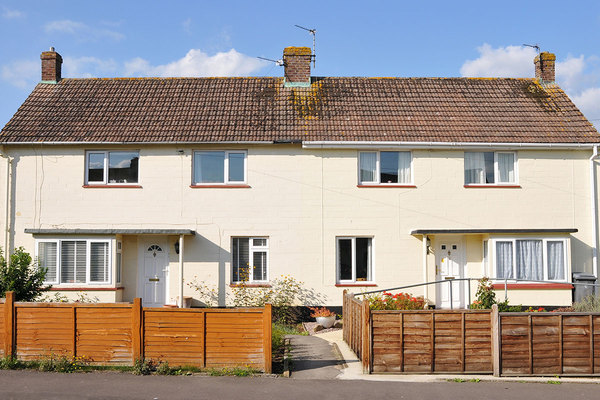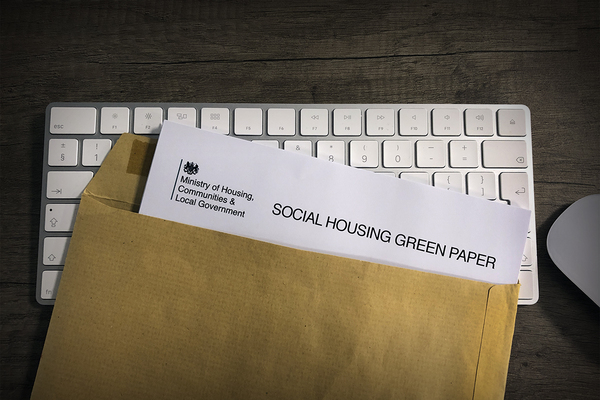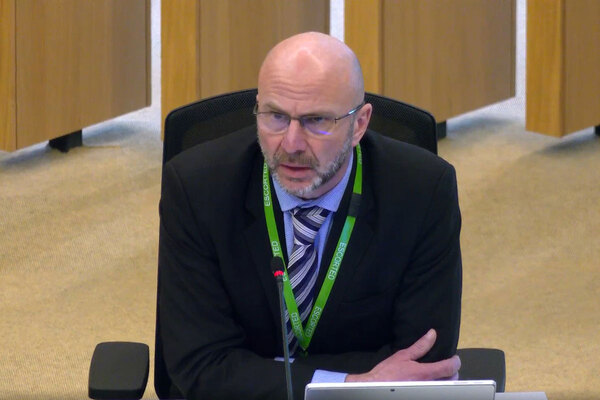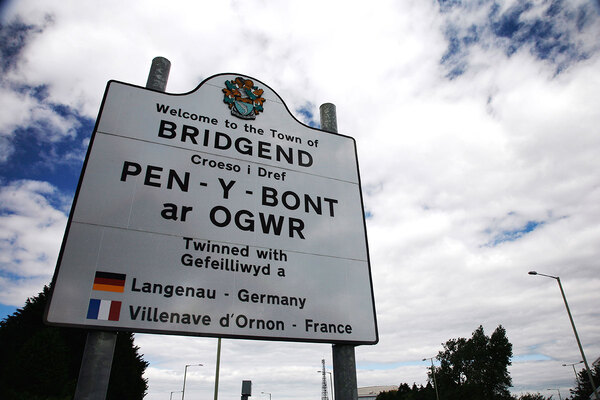You are viewing 1 of your 1 free articles

Green paper measures are not enough to create May’s ‘new generation’ of council homes
Green paper proposals are welcome but much more is needed to support councils to build, writes John Bibby
The prime minister in her introduction to the Social Housing Green Paper states that the government is committed to “building a new generation of council homes to help fix our broken housing market” and promises that the green paper “will provide a further boost to the number of council houses”.
However, under the very welcome but limited measures outlined in the green paper we are unlikely to see any significant overall increase in the current stock of around 1.6 million council houses in the next few years, and more needs to be done immediately to free up councils to boost the overall number of council houses and create the promised new generation of council housing.
The green paper proudly proclaims that since 2010 more council homes have been built than in the previous 13 years.
This fact masks the reality that since 2010 the total stock of local authority housing has decreased by some 184,000 homes from 1.78 million in 2010 to 1.6 million in 2017 according to government statistics, and around half of the councils in England have no council housing at all.
The commitments made in the green paper to support councils to build more council housing are indeed very welcome.
“Under the very welcome but limited measures outlined in the green paper we are unlikely to see any significant overall increase in the current stock.”
In particular, the decision not to impose the planned higher-value asset levy and to repeal the relevant provisions of the Housing and Planning Act 2016 will be warmly welcomed by councils across the country.
This will mean that, for the first time in many years, councils will be able to prepare longer-term Housing Revenue Account (HRA) business plans without the threat of imposition of the levy and the sale of so-called higher-value council housing and the consequent loss of vital future rental income entailed.
The proposals for reform of the ways in which councils will be able to use receipts from the sale of council houses under the statutory Right to Buy issued alongside the green paper are also to be welcomed – as is the recently announced increase in the HRA borrowing cap “in areas of high affordability pressures” by up to £1bn over the three years from April 2019.
However, even when combined these two measures alone will not be sufficient to create a new generation of council housing, and indeed are unlikely to do more than enable councils to move closer to the target of replacing homes sold under the Right to Buy on a one-for-one basis; perhaps this is why the accompanying consultation paper on use of Right to Buy receipts proposes to replace the current target of one-for-one replacement of “additional” homes sold under the Right to Buy with a wider measure covering net additions to the social housing stock.
The green paper asks whether the right balance is currently being struck between providing grant funding for housing associations and HRA borrowing for local authorities.
It recognises that the last time the country was building anywhere near 300,000 new homes a year was in the late 1960s, when social housing made up almost half of the total supply, but it should not be a case of one part of the sector losing out against the other and overall more investment is urgently needed in social housing provided by both housing associations and councils.
If the government is to fulfil its promise to deliver a new generation of council housing and potential improvements to the Decent Homes Standard it needs to go further than abandoning the high-value asset levy and introducing greater flexibilities in the use of Right to Buy receipts by agreeing to a general raising of HRA debt caps for all stock-retained councils, allowing individual authorities to set their own HRA borrowing and financing limits within the context of a long-term sustainable HRA business plan and in line with the operation of the local government Prudential Code.
John Bibby, chief executive, Association of Retained Council Housing
Social Housing Green Paper: full coverage
All our Social Housing Green Paper coverage in one place:
Green paper measures are not enough to create May’s ‘new generation’ of council homes Green paper proposals are welcome but much more is needed to support councils to build, writes John Bibby
Green paper shows ministers now see associations as trusted partners Focusing on the failure of the green paper to address supply misses the point, writes Boris Worrall
Government should focus on building on what is already strong Philippa Jones considers the Social Housing Green Paper through a slightly different lens
We need more than a week of delayed announcements bundled together Jules Birch reflects on the government’s ‘Housing Week’ announcements
The regulator should monitor how associations assist homeless people Government announcements this week are positive, but any enhanced role for the English regulator should include looking at homelessness prevention work, argues David Bogle
The regulator’s role should be limited to dealing with systemic failures Julian Ashby suggests the Housing Ombudsman Service should deal with all complaints
The green paper shows ministers are in listening mode Despite some glaring omissions, the government appears to be in listening mode and it is important the sector takes advantage, argues Emma Maier
A short history of social housing league tables Attempts to create league tables for housing associations are nothing new. Mervyn Jones looks at how they have worked in the past
League tables could prove blunt and counter-productive, sector warns Housing figures criticise government proposals to measure social landlords against performance indicators
Government ‘must decide how proactive regulator should be’ on consumer standards Ministers now face a dilemma over the regulator’s focus, sector figures say
The Green Paper: a golden opportunity missed? Melanie Rees assesses the Social Housing Green Paper against recommendations drawn up by the Chartered Institute of Housing and finds the government comes up short
Longer strategic partnerships and guranteed debt to boost social housebuilding The Social Housing Green Paper outlines key ways of boosting supply
The green paper is remarkable progress but it is still not enough The green paper suggests the government appears to be re-writing much of its policy since 2010, but more needs to be done, writes Jules Birch
Green paper marks a ‘milestone’ on resident involvement The government’s recognition residents need clear information is to be welcomed, now it up to the sector to embrace tenant involvement, writes Paul Hackett
Ministers consider stock transfer programme to community-led associations The stock transfer programme could be revived under proposals in the housing green paper
Access to housing grant could be tied to new league tables Grant could be awarded according to how well landlords meet performance indicators, the paper suggests
Ofsted-style regulation of tenant services proposed The government is considering expanding the Regulator for Social Housing’s remit to intervene over tenant services and give it a more “proactive approach to enforcement”
Government proposes dropping one-for-one Right to Buy replacement commitment A consultation paper published alongside the green paper proposes a broader measurement to replace the one-for-one pledge
A list of recent housing policy U-turns The green paper confirms yet more housing policy U-turns from the government, which has spent the past two years dropping policy ideas developed under the David Cameron government. Here is a rundown of the major changes in policy direction
Sector welcomes green paper but calls for more ‘ambitious investment’ Reaction to the proposals, from the National Housing Federation, Chartered Institute of Housing and more
Morning Briefing: reaction to green paper announcements how the media reported the proposals trailed by the government overnight
Government drops plans to force councils to sell higher-value stock The government drops plans to force councils to sell higher value homes
League tables and ‘sharper teeth’ for regulator in social housing green paper Ministers reveal some of the things in the paper ahead of its publication
Grenfell survivors: green paper does not go far enough survivors of the Grenfell Tower fire have said the measures published in the Social Housing Green Paper do not do enough to rectify issues in the social housing sector
KEY PROPOSALS IN THE SOCIAL HOUSING GREEN PAPER
- New 'league tables' of housing providers based on key performance indicators, surrounding services such as repairs and neighbourhood management. This could be linked to housing grant.
- Consideration to scrapping of the current 'serious detriment' test, to allow 'Ofsted-style' tougher consumer regulation
- New home ownership options such as allowing tenants to buy as little as 1% of their property each year through shared ownership. This would only apply to new shared ownership purchases.
- Ditching of plans to force social landlords to offer fixed term tenancies rather than lifetime tenancies in social housing
- Ditching of plans to force councils to sell off their most valuable social housing when it becomes vacant
- The potential introduction a new stock transfer programme from councils to 'community-led' housing associations
- The return of guaranteed debt funding to help the development of affordable homes, and longer term 'strategic partnerships' for developing housing associations












